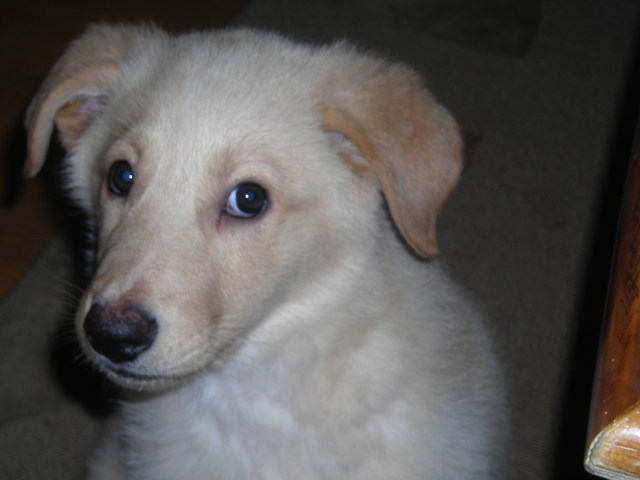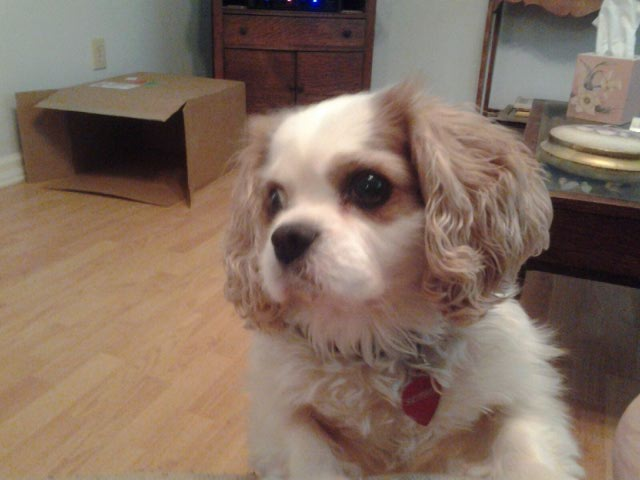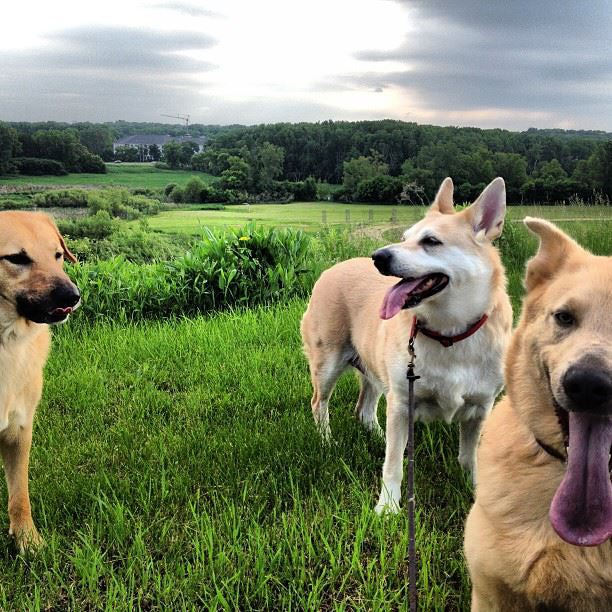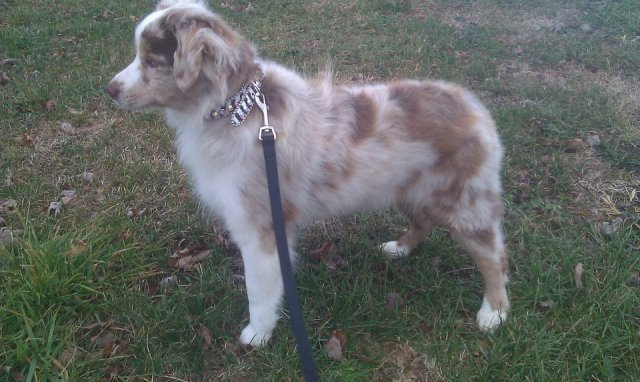QuestionHello,
I adopted an elkhound about 2 yrs ago to play with our other 7yr old elkhoud who also is adopted. Oreo (3-4yr female) is an excellent dog but has some issues.
1. goes crazy when some cars pass by - upsetting neighbors, when I am near her she will sit and let them pass quietly but if I am not it is a bark and chase
2. Per the vet a weird order prior to bathing like a pyrethra - not on flea meds until we figure it out. Possible cause of seizures
3. agressive with unknown people but not all people. almost attacked a lady while on a walk last week.
4. does great at the dog park but if a dog looks at her wrong she goes in to attack. It is like a face off and if the other dog is called away she goes in to attack.
She is a great dog but I don't want there to be any issues. I love her soo much and I just want a safe/happy home for her but my fear is her attacking neighbors or kids before I can tell them to stay away.
AnswerGreetings, and thank you for contacting All Experts!
Norwegian Elkhounds are a strikingly beautiful breed but they can be a handful when it comes to temperament and training. They were bred as you may already know to hunt elk, bears and other wild animals, and therefore,they are equipped with a keen sense of smell and have lots of endurance and stamina. They also have a tendency to be stubborn and can be assertive at times. This can explain some of the behaviors you are seeing. I will try to address the issues one by one, and please bare with me if this may turn to be a bit long.
Issue 1)
This can be due to prey drive and may stem from your breed's drive to chase ''bears, elks and other wild animals''. In her eyes, those cars may resemble prey and the need to chase is very strong in this breed. Frustration from not being able to chase builds up deriving in a barking frenzy. Since she seems to do this when you are not around there is really no way to stop her from doing this since you are not there! Seems like she knows you do not approve this behavior, but has learned that she may do as she please when you are not around! The best approach is therefore to nip this behavior in the bud by limiting her view of these cars. Is she doing this by the window? Put a curtain, invest in blinds or adorn it with privacy adhesives. Does she do this in the yard? then limit her time there, this breed does best ultimately at home with their family pack.
A big question to ask is if she is getting enough exercise and mental stimulation. Elkhounds need lots of daily training, exercise and mental stimulation. Walk her a lot, invest in Kongs to keep her mentally stimulated, hide her toys and ask her to find them, play fetch, etc. A tired dog is ultimately a good dog. Also,this breed needs firm leadership, make sure both your Elkhounds abide to the Nothing in Life is Free Training program, it can do wonders! Here is an article on how to use it:
http://dogtime.com/basic-obedience-tips-aspca.html
Issue number 2)
I am sorry I am having a hard time understanding exactly what you are asking about. It sounds like she is having seizures and is not being put on flea meds because of this. If you can follow up with more details I may be able to help. Particularly I am not sure what you mean about ''Per the vet a weird order prior to bathing like a pyrethra.'' I am not sure what you mean by ''pyrethra?'' and ''a weird order''.. please specify, and I will be more than happy to try to help.
Issue 3)
By breed standard, the American Kennel Club lists Norwegian Elkhounds as an effective guardian, yet normally friendly. However, trainer, consultant and published author ''Michele Welton'' claims that some specimens may be more restrained and therefore more on the aloof side especially when not socialized well. Since you adopted this one, you do not know if it was socialized properly from puppy hood. Assuming it was not, you need to work on remedial work, and therefore use classical conditioning to better have a grasp on the issue. You may not be able to solve the aloofness totally as this may be genetic, but you may be able to at least better ''manage'' the situation.
Here are some links about the breed:
http://www.akc.org/breeds/norwegian_elkhound/
http://www.yourpurebredpuppy.com/reviews/norwegianelkhounds.html
Since she is aggressive towards some people, it looks like there is that ''something'' that does not convince her about certain people. If you are attentive, at times you may find a pattern: for instance, some dogs do not like people with low voices, people wearing hats, men, people that look at them directly in the eyes, people giving her attention, children, people patting on the head, people dressed oddly, hats, sunglasses etc. At times though, the selection of who to call foe, may appear random and may encompass things we may not be much aware of such as: body posture, carrying the shoulders in an assertive way, moving suddenly, etc. This is mostly fear based, since it is directed towards strangers and it is therefore fear of the unknown. I would recommend a great book by animal behaviorist Patricia McConnell titled '' Cautious Canine''. This book outlines a step by step guide to solve, or at least better manage, fearful behaviors towards people.
Your dog is basically attacking to prevent to be attacked. Your dog's lunging can be compared to a person scared of cats: upon a cat coming close, people scared of cats will likely ''shhoooo'' them away and step forward making a loud noise with their feet. Dogs in the same way growl and lunge to send people they are cautious about away. And it works! As soon as dogs learn that by lunging, barking and growling, people back off, the behavior reinforces itself and unfortunately will put roots. This is why they say aggression get only worse when not addressed.. I am sure the lady she almost attacked last week moved away quickly! One point for your girl!
To work on this issue, you need to minimize these ''attack'' instances. Invest in a ''Sensible Harness' by Soft Touch Concepts, this will give you better control of her and make you feel more secure in walking her. Your confidence is extremely important in rehabilitating her.
Next, choose 100$ treats, those that any dog would die for. That is: sliced hot dogs, freeze dried liver, steak, chicken.. whatever your dog loves...invest in a treat pouch or a fanny pack that goes around your waist for easy access. If she is not much food oriented or too aroused to eat, try to skip her dinner, it won't harm her.
Now, practice this exercise at home before heading out. Make a noise with your mouth, anything, a whistle, smacking sound or clicking noise. No names or words, just a noise. This is according to Pavlov's studies, a neutral stimulus. In other words, the noise means nothing to your dog UNTIL you start giving it a meaning.
Now, make the noise with your mouth, keep a treat at eye level and give it as soon as your dog looks up to you in the eyes. Then give the treat. So it should go like this: noise-treat at eye level-dogs looks up at you-treat is delivered. Repeat, repeat, repeat. Something magically will happen at a certain point: your dog will look up to you automatically whenever you make the noise in anticipation of the treat. The neutral stimulus which had no meaning before now means something... ''food is coming!'' therefore it has transformed from a neutral stimulus to a conditioned stimulus, welcome to the world of classical conditioning! You can read more about Pavlov's studies if interested here:
http://www.simplypsychology.org/pavlov.html
Once you have this down well, you need to work your dog under her threshold. This means you need to prevent her from lunging, growling, barking when on your walk and encountering people. You need to keep an eagle eye on her body language and try your best to work from a distance away from people you know she will not react to. Start by walking in a quiet road. As soon as you and your dog notices somebody walking nearby, make the noise with your mouth, keep the treat at eye level, (hopefully she will look up at you) and you will deliver the treat. If she is too aroused by the presence of the stranger to avoid looking at you, it means this person was too close for comfort, work from a greater distance and put her up for success from there...
Now, you are still working on classical conditioning, but now you are working on getting her to associate the presence of people with tasty treats to change her emotional state. You want to work hard on this for a while for her to get it. If you are diligent enough, she will start looking at you in anticipation for the treat upon seeing a stranger walking. Instead of her thinking ''Oh, no a stranger is coming..bow wow.. woof woof..attack!'' you want her to think ''Oh good, a person, where's my treat, where's my treat!!!1?'' She how lovely this is?
Now please be warned: some time may come where your dog may take steps back instead of progressing.. You may not be able to watch her carefully and prevent her from reacting, or somebody got too close too fast..or you felt she was ready for a closer encounter but she was not...this will set all the training back to square one for some time..try your best to avoid this. To stay motivated, mark your calender with the days she had good experiences and the days she has not.. you should see progress but a few set backs.. try your best to prevent step backs and if you do, start working on more distance and go a few steps back and work from there..
Now if all is going well, and you have had weeks with no incidents of lunging/growling/barking you can progress.. have a person come near her and toss her a treat, repeat with as many people you can, just say ''Do you mind tossing her a treat? we are in training..'' You can do this in front of a pet store or near the dog park when sitting on a bench. If people ask to pet her say ''no, we are in training right now''.
As she gets better then you will have people hand her a treat. Do not allow petting her or giving her attention as of yet. Many dogs that are a bit aloof do better if they are not given attention. No looking at her, no talking to her, just ignoring her. If she is really comfortable, she will go near to say hi. But she may step back upon being pet. So have people ignore her until she is more comfortable around people. Make sure as her training progresses, to have people that you feel may intimidate her toss or give her treats.. she needs to generalize that all strangers even those looking oddly, with bigger voices etc. have something good for her.. I understand this sounds like an overwhelming program but it certainly pays off. If you need help, a dog behaviorist will certainly help you out. If you fear she may bite, muzzle her until you feel she is more reliable.
Issue number 4)
About the dog park.. personally I would avoid dog parks like the plague. They are full of unruly dogs and may be a source for serious squabbles. The Norwegian Elkhound also according to Michele Welton can be ''aggressive with other dogs of the same sex''. Attacking when the other dog is going away is typical, it is a bit a ''coward'' way to ''attack'' giving your Elkhound a sense of accomplishment since it almost appears as if the dog was leaving thanks to your dog's ''lunging''. It is almost like the fearful dog that bites people in the buttocks as they turn around to leave. And again, this behavior is self-rewarding since the other dog leaves when she does it so she may try to do it on more and more dogs she does not feel comfortable with.
There are better structured ways to get dogs to socialize. Organize a play session at your home with dogs you know she gets along with, or send her to group obedience classes. The dogs looking at her the wrong way may be rowdy dogs trying to challenge her.. and dog parks are unfortunately full of dogs like that!
Here is a great article about this:
http://www.dogstardaily.com/blogs/dog-parks-and-why-you-should-avoid-them
I hope this helps! It surely sounds like you love your dogs and are trying to do your best to help them. My very best wishes!
Disclaimer: Please use caution and muzzle your dog for safety if you are dealing with aggressive issues. Please understand that only a dog behaviorist can properly assess behavior problems and offer behavior modification programs according to their professional observations. Make safety your top priority.

 My mini-daschund is breaking ME in
Question
Tyson!
My miniature daschund is 8 months now,
My mini-daschund is breaking ME in
Question
Tyson!
My miniature daschund is 8 months now,
 housetraining
QuestionQUESTION: We have a 10 week old retriever/colli
housetraining
QuestionQUESTION: We have a 10 week old retriever/colli
 dealing with a blind 5yr old Cavalier
Question
Skipper
I have a lovely, 5 yr old Caval
dealing with a blind 5yr old Cavalier
Question
Skipper
I have a lovely, 5 yr old Caval
 traumatic
QuestionI have a 6 lb Yorkie that is a rescue, weve had
traumatic
QuestionI have a 6 lb Yorkie that is a rescue, weve had
 Jumping.
Question
Stetson
I have a 8 month old, male mini
Jumping.
Question
Stetson
I have a 8 month old, male mini